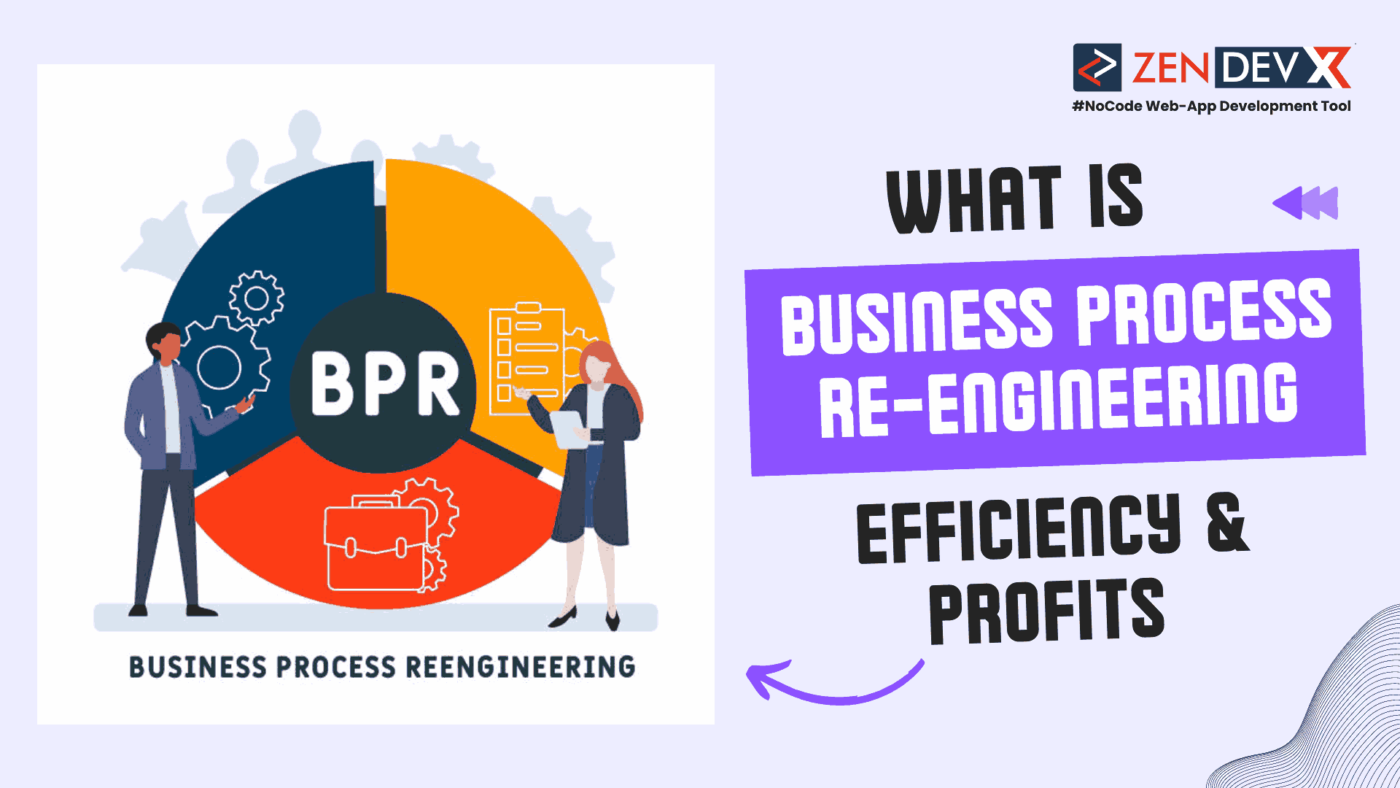Changing internal operations and procedures gets more challenging as your company gets bigger since individuals get used to the current methods. CIOs should keep in mind, nevertheless, that only by spotting areas for development and bottlenecks will procedures be improved. By means of a continual systemic examination and rebuilding of the current processes, business process engineering helps companies enhance efficiency and greatly lower costs.
Business Process Re-engineering (BPR) is:
A revolutionary approach called business process reengineering (BPR) totally changes how companies run. It aims for notable increases in cycle times, quality, output, employee and customer satisfaction. BPR seeks to reorganise corporate operations for outstanding improvements.
Often known as reverse engineering or software reengineering, reengineering is the study, design, and change of already-existing software systems. This procedure aims mostly to improve their maintainability, performance, and quality. Reengineering is a great instrument in the field of software development and maintenance since it can result in notable increases in software efficiency and effectiveness.
Is business process reengineering (BPR) the same as business process improvement (BPI)?
BPR seems on first glance to be somewhat similar to business process improvement (BPI). But the two differ fundamentally from one another. BPI might be about slightly adjusting certain guidelines here and there. Reengineering, on the other hand, is a free method to transcend the set limits and bring about seismic transformations.
BPI is an incremental system that emphasises on modifying the current procedures to make them better; BPR sees the whole picture. BPI isn’t against the grain. It points up the process bottlenecks and suggests tweaks in particular functional areas. The process framework basically stays the same while BPI is under use. From a high-level management standpoint, BPR, on the other hand, often follows an unusual path to rework procedures and questions the current regulations. BPI is like improving the exhaust system on your project vehicle. Business Process Reengineering, BPR is about changing the whole exhaust handling approach.
Five Steps of Re-engineering Business Processes (BPR)

Stakeholders must better grasp the main processes involved in business process re-engineering if we are to maintain fair, open, and efficient practices in it. Though every company has a different approach, these steps below fairly capture the process:
The five business process reengineering techniques are listed below:
1.Map your company’s current state of operations.
Compile information from all sources, including stakeholders and programme tools. Know present performance of the process.
2.Examine them and identify any gaps or disconnections in any process.
List every mistake and delay causing a free flow of the process to be hampered. Verify whether all the necessary information is available in the corresponding steps so that the stakeholders may decide fast.
3.Look for and validate improvement prospects.
See if every step is definitely required. Eliminate the step if it is meant to be used just for informing the individual and add an automated email triggers.
4.Create a cutting edge future-state process map.
Provide a fresh procedure to address every issue you have found. Not hesitate to create a completely fresh, guaranteed to be successful process design. Set KPIs for every stage of the operation.
5.Apply future state changes and pay attention to dependencies.
Tell every interested party about the new system. Only start until everyone is on board and informed about the revised approach. Track the KPIs continually.
A Real-Life BPR Illustration
During the 1990s, many businesses including Ford Motors, GTE, and Bell Atlantic tested BPR in order to reorganise their operations. Their lives changed significantly from the reengineering process they embraced; their expenses were much reduced and they were more efficient against rising competition.
The Story
An American telecom firm with multiple divisions to handle consumer help about technical difficulties, billing, new connection requests, service termination, etc. Every time a client ran across a problem, they had to phone the relevant department to have their complaints addressed. While the enterprise was distributing millions of dollars to guarantee customer happiness, smaller businesses with little means were endangering their operations.
After looking at the matter, the telecom behemoth decided it required radical actions to streamline processes—a one-stop answer for all consumer questions. It chose to combine the several divisions into one, let go of staff members to reduce several handoffs, and create a nerve centre of customer service to manage all problems.
A few months later, they opened a customer service centre in Atlanta and began teaching their repair staff members “frontend technical experts” to handle the new, all-encompassing task. The corporation gave the support staff new tools that let them quickly access the client information and manage practically all types of requests. Now, should a consumer call for a billing inquiry, they could also have their uneven ring tone corrected or have a new service request verified without calling another number. They may also use the push-button phone menu to link immediately to another department to query or provide comments on the call quality while they were still on the phone.
When should one think about BPR?
BPR has the drawback in that implementation is more costly the larger you are. Five months after debut, a startup might change its strategy including business process reengineering with low implementation expenses. Once a company expands, though, it will find it more difficult and costly to totally reengineer its systems. But they are also the ones compelled to adapt to competition and unanticipated changes in the market.
More than being industry-specific, though, the demand for BPR is always based on the goals of the company. When businesses have to break the rules and turn the tide to reach high targets, BPR is efficient. Using any other process management tool for similar actions will merely help to reorganise the Titanic’s deck chairs.
Fundamental Issues
Ask yourself the following before deciding to use BPR for functional reorganisation:
- Our clients are:
- We are presenting to them what values?
- Are the present methods producing expected results?
- Does the redesign or redefining of the procedures necessary?
- Do the procedures complement our long-term objectives and aims?
- Should we were a new company, how would we handle the current procedures?
Should a corporation find that it is indeed functioning on complacent grounds, it must choose the appropriate type of fix or take into account BPR for a complete makeover. Done right, BPR’s aggressive approach produces startling outcomes for a business in terms of better cycle times, product quality, productivity, and so on.
Good BPM Helps to Lower BPR Needs
Process reengineering surely causes staff productivity to suffer. Changes save a lot of money on analysis, reengineering, and documentation; they are challenging to control. Reengineering is far less necessary if processes are controlled throughout running time.


